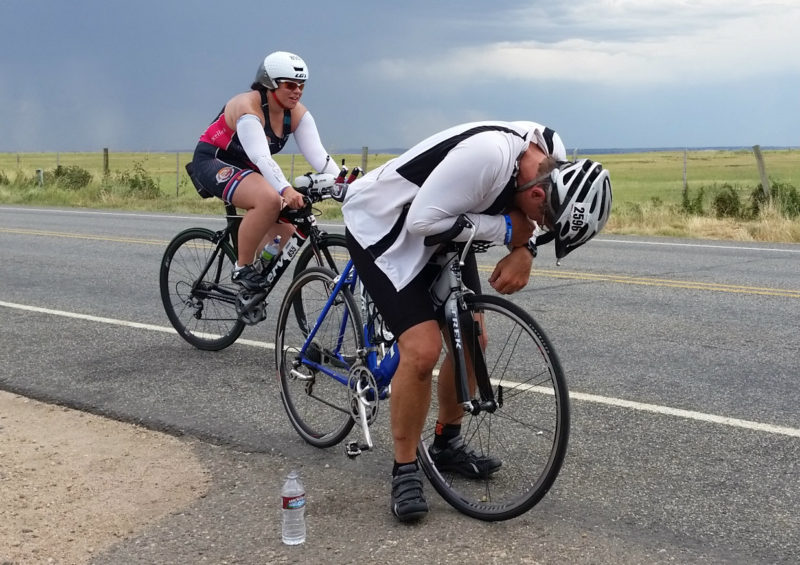Races will very rarely ever go 100% to plan. That’s why we need to plan for when something goes wrong. In my race planning, I call this endurance racing contingency planning.
Let’s look at a pretty basic and common example. If we ride a bike, we might get a flat tire. If we’re racing on a bike, we still might get a flat tire. The best way to handle a situation that has a likelihood of occurring is to be prepared for it.
If we get a flat tire in a race, we’ve got some options:
- Be prepared to fix it (have a spare tube, CO2 or pump, and know how to use it)
- Wait for the support car to come and fix it (if there is support)
- Sit on the side of the road and do nothing
Assuming there aren’t support cars right behind you, if you have never changed a tube on your bike and you get a flat, there is a high probability that the stressful environment of just being in a race will increase dramatically. The easiest way to alleviate this stress is to know what might happen and be ready.
[Note: some professional triathletes won’t carry a flat kit for shorter races. Those races are often so tightly contested, that the time, even 2 minutes, it would take to fix it, would take them out of podium contention. But this is a calculated risk they take.]
Sit down at some point in your training season (preferably not the night before your race) and write down the significant things that may go wrong. A flat tire is probably the most obvious if you are a cyclist or triathlete. What about an old injury that sometimes rears its ugly head? What will you do? What about if you’re still dialing in your nutrition plan or hydration plan and it doesn’t seem to be working – how will you fix it?
For contingency plans, you want to think about the most likely issues or problems you might encounter and be prepared. Some things you’ll need to practice ahead of time (like changing a flat), other things you just might know from experience (perhaps handling cramps.) Once you know how you’ll take care of a situation, make sure you have all the tools necessary, visualize solving these problems a few times before your race so if a problem does happen, you’re ready. If it doesn’t happen, then even better!
Contingency planning is one part of my race planning process, which I’ll be sharing with you soon. The more prepared you are for anything that can happen in a race, the fewer “what-ifs” will be floating in your head to add to stress. And if that “what-if” pops in your head, you can confidently answer, “Then I’ll do this.”
In the comments below share what kind of problems you’ve had while racing (and whether you were prepared or not).






